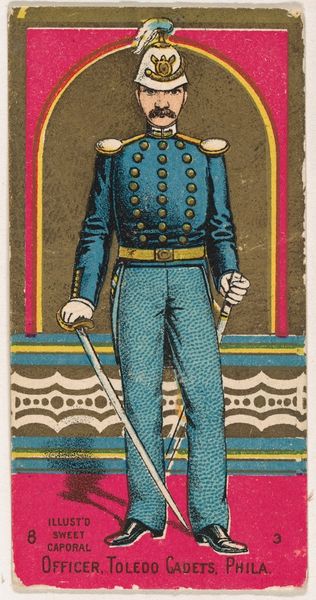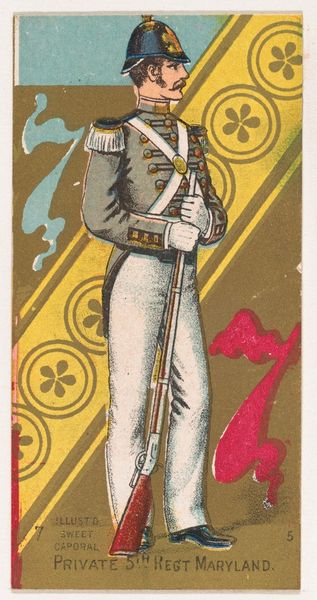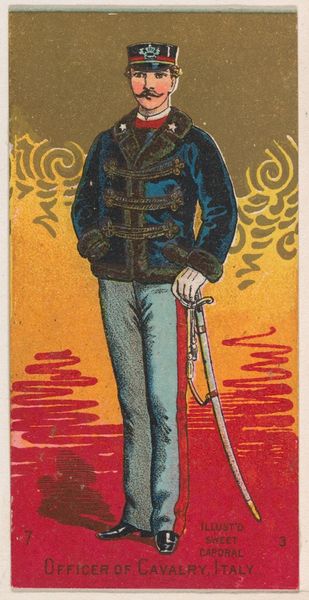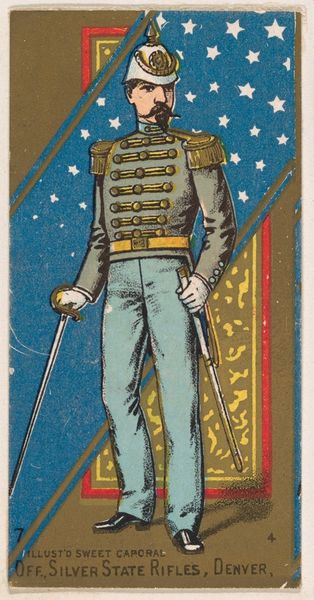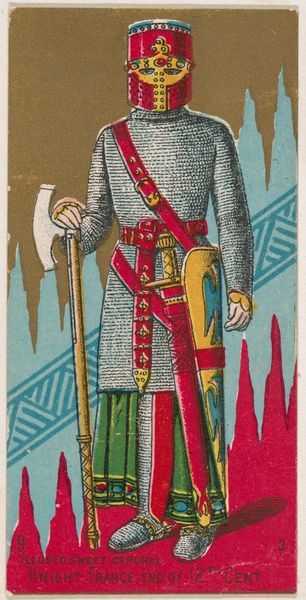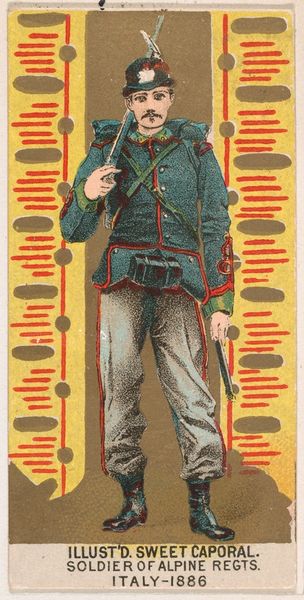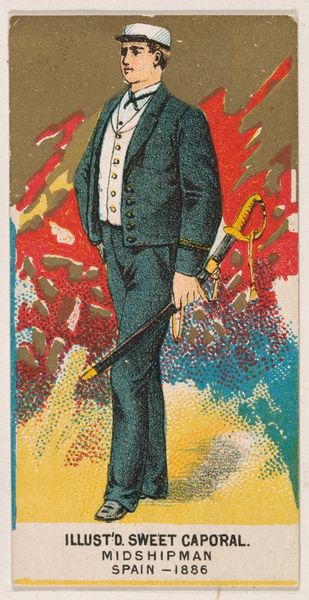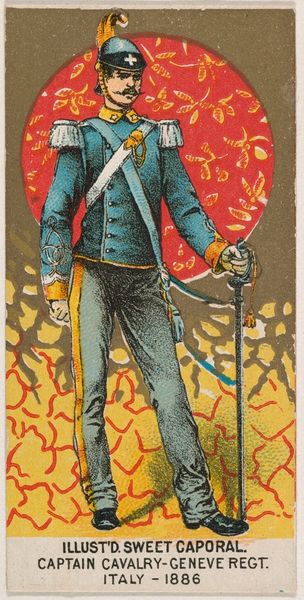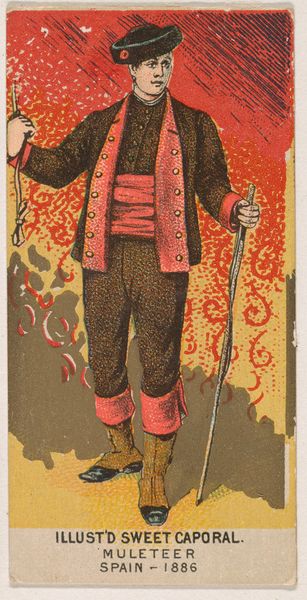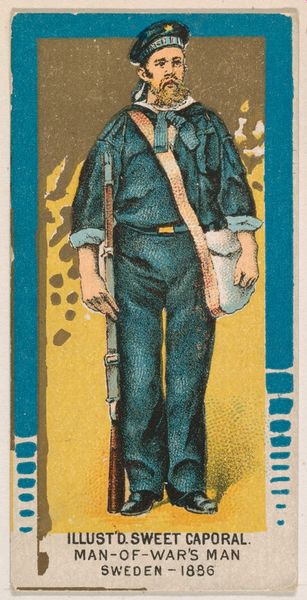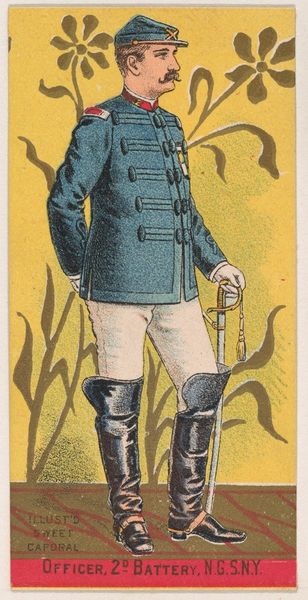
Sergeant Piemonte Cavalry, Italy, 1886, from the Military Series (N224) issued by Kinney Tobacco Company to promote Sweet Caporal Cigarettes 1888
0:00
0:00
drawing, print
#
portrait
#
drawing
# print
#
caricature
#
caricature
#
cartoon sketch
#
soldier
#
men
#
watercolour illustration
#
genre-painting
#
history-painting
#
academic-art
Dimensions: Sheet: 2 3/4 × 1 1/2 in. (7 × 3.8 cm)
Copyright: Public Domain
Editor: This is "Sergeant Piemonte Cavalry, Italy, 1886," from the Military Series, created around 1888 by the Kinney Tobacco Company. It's a print, part drawing, part caricature. It definitely has a… playful, almost satirical feel. How do you interpret this piece, especially given its origin as a cigarette card? Curator: Well, we must consider the complex interplay between commerce and national identity in the late 19th century. These cards, distributed by the Kinney Tobacco Company, served less as individual artistic statements and more as tools of popular culture. How does the exaggerated depiction of the Sergeant – the meticulously detailed uniform versus the somewhat cartoonish features – strike you? Editor: It’s a stark contrast. The uniform looks like someone put a lot of effort into the detail, while the Sergeant himself seems like a figure from a comic strip. Curator: Exactly! And that's precisely the point. While ostensibly celebrating military figures, it also gently satirizes them. Consider the context: Italy was still a relatively young nation striving to forge a cohesive national identity. These cards circulated images of "Italianness", defining masculinity and heroism in ways designed to sell cigarettes. How much of this presentation do you believe reflected lived military experience and what part was promotion? Editor: So, it’s not necessarily about historical accuracy, but about constructing an image, a brand even, that resonates with the public? It's like a very early form of propaganda disguised as a collectible. Curator: Precisely. We should not view it as straightforward glorification, but as a carefully crafted image embedded within a broader socio-political landscape where commercial interests intertwined with nationalistic sentiment. It raises questions about the public role of art, wouldn't you agree? Editor: Definitely gives me a lot to think about in terms of the intersection of art, advertising, and national identity. Curator: And how easily those lines are blurred. These objects highlight art's participation in power structures, its potential to reinforce—or even subtly subvert—dominant ideologies. A simple piece of promotional material can reveal so much about a culture’s values and aspirations.
Comments
No comments
Be the first to comment and join the conversation on the ultimate creative platform.
